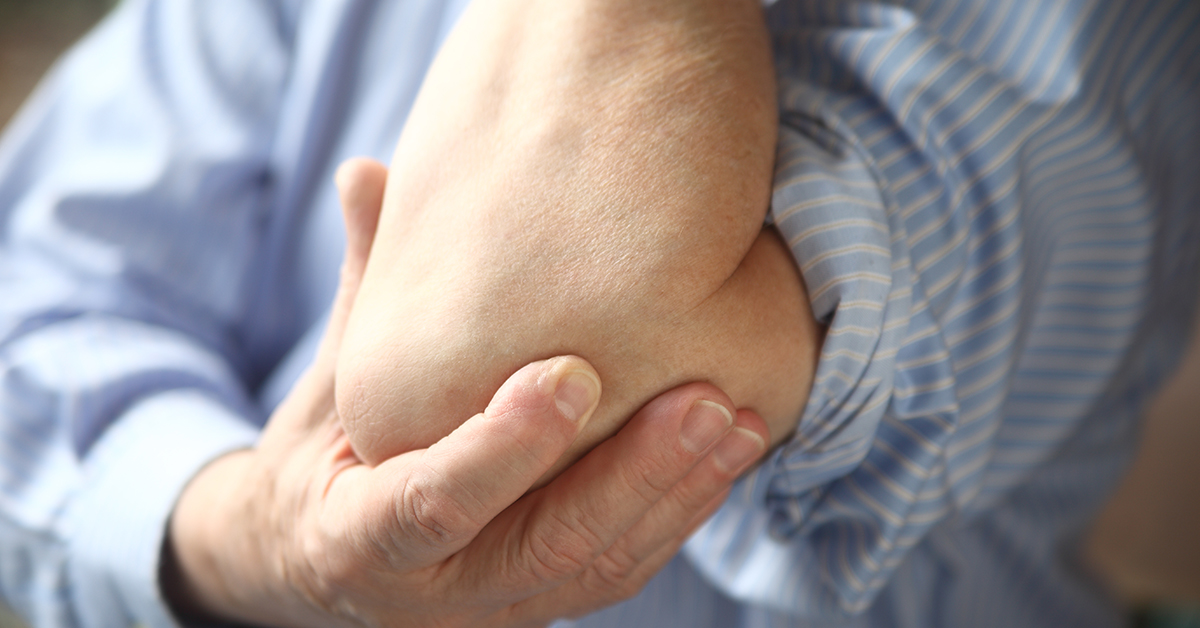
Elbow Anatomy
You use your elbows every day, although you may not even realize it. Typing, picking things up, shaking hands, and many other everyday actions require bending or rotating the elbow. Take a look at how you have your elbows positioned right now. Are your elbows bent or your forearms rotated? These actions are possible because of the bones, ligaments, muscles, and tendons working together in the elbow to create pain-free and easy movement.
The Bones in the Elbow
Three bones meet to form the elbow: the humerus, the ulna, and the radius. The humerus is the bone in your upper arm, and the part of the humerus that meets the elbow is called the distal humerus. The ulna and the radius are the two bones that make up the forearm. If you were to hold your hand out with your palm facing upwards, the ulna would be on the inner, or medial, side, while the radius would be on the outer, or lateral side. The ulna is the larger of the two forearm bones, with a bony prominence at the elbow called the olecranon. The olecranon and the distal humerus form the hinge-like humeroulnar joint, which allows for bending and straightening movements. The end of the radius that meets the elbow is called the radial head, and it meets the humerus to form the humeroradial joint, which acts similar to the hinge-like humeroulnar joint. The radial head also articulates with the ulna to form the proximal radioulnar joint, which allows for rotating movements of the forearm, like when you have your wrists turned down to type.
Soft Tissue in the Shoulder
Muscles, tendons, ligaments, and other tissues work together with the bones in the elbow to allow for easy and pain-free movement. The ends of the bones in the elbow are covered in a smooth cartilage so that movement is possible with minimal friction.
If you were to stretch your arm out and bend your wrist back so that the palm of your hand is pointed away from you, the muscles you would use are called the extensor muscles. The extensor muscles are in charge of pulling the wrist back and they join together to attach to tendons at the elbow. These tendons connect the extensor muscles to your lateral epicondyle, a bony bump on the outer side of your elbow.
When you bend your wrist so that your palm is facing toward you, you are using what are called flexor muscles. These flexor muscles join together to attach to the common flexor tendon near the elbow. The tendon attaches on the inside of elbow at a bony mass called the medial epicondyle.


